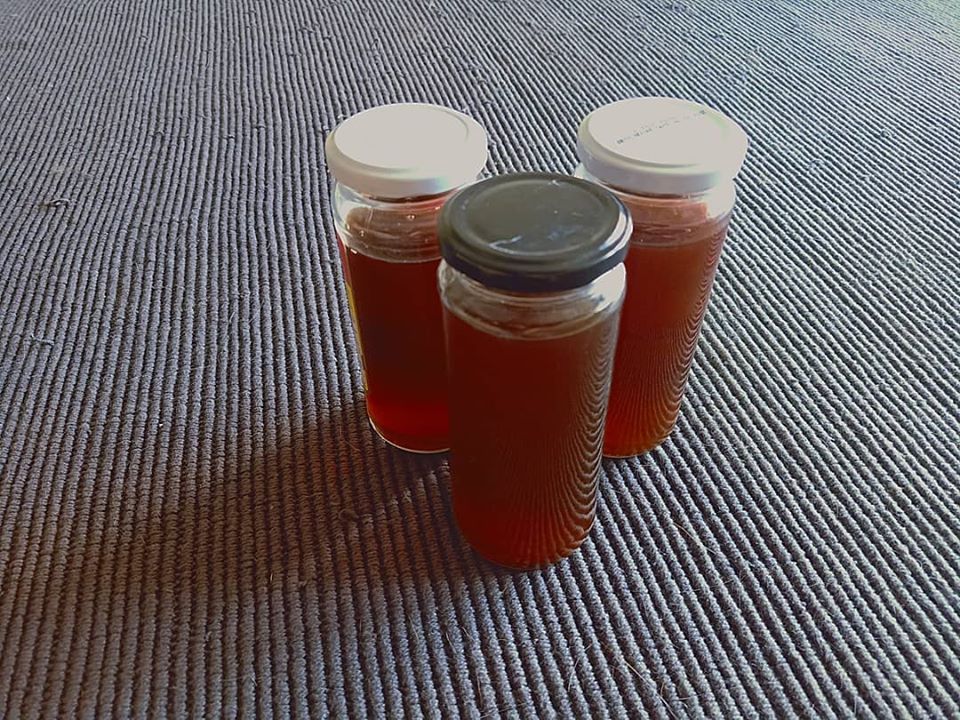
Make super easy vegetable stock using vegetable skins and scraps! We use this nutrient-dense liquid in place of water when making soups, stews, curries, pasta sauces, risotto, whatever. Haha.
HOW WE MAKE VEGETABLE STOCK USING KITCHEN SCRAPS:
STEP 1 - COLLECT KITCHEN SCRAPS
We collect all of our clean veggie scraps in a container in the freezer. (See 1, 2, 3, and 4 below.) We only collect good, clean scraps. If they're bad, rotted, or mouldy, we chuck them into our Bokashi bucket right away.
-
The simple bare necessities
These are our base ingredients. If you don't have any other ingredients, and you've got these four, you're good to go.
— Carrot scraps (We usually just add the nubs at the top because we don't peel our carrots haha.)
— Garlic scraps/peel
— Onion scraps/peel (Different onions, shallots, scallions!)
— Celery scraps/stems (If using mature celery leaves, don't put a lot.)
-
Flavour boosters
In our home, we consider most of these ingredients necessary. It's just that most people don't, so we just won't say they're required. These ingredients give more body to the flavour of the broth.
— Mushroom stems (These are the best. We add as much of these as we can.)
— Leeks
— Thyme
— Bay leaves
— Peppercorns
— Sea salt (Skip this if you want a Whole Foods Plant-Based recipe, and if you want to avoid the extra microplastics that come with salt crystals.)
-
Mix and match random scraps
We practically just freeze all of the odd bits and ends that wind up on our chopping boards whenever we cook anything. We dump a combination of any of these ingredients into our veggie stock.
— Tomato scraps (Keep the eyes, but leave out the seeds.)
— Corn cobs (These might make the stock slightly sweet, though.)
— Sweet pepper scraps
— Turnip scraps
— Asparagus stems (These are the woody ends of the stems left after you've snapped the spears off.)
— Green beans (These are the eyes and strings that usually get pulled off of different beans.)
— Eggplant scraps
— Okra scraps
— Spinach scraps
— Zucchini scraps
— Peas
— Lettuce scraps
— Scraps of herbs and spices (e.g. cilantro, parsley, parsnip, oregano, basil, rosemary, etc.)
-
Starchy scraps
Makes the stock a bit starchy and cloudy. Those who want a clearer kind broth steer clear from these vegetables. We, however, add them when we have them. Why? Because we don't want our scraps to go to waste, and because they give the broth body, and we're totally okay with that.
— Lentils
— Potato scraps (we don't have a lot of potato scraps anyway cos we don't peel our potatoes)
— Kalabasa scraps (we also don't peel our kalabasas)
-
Brassicas and other bitter bites
These can lend a bit of a bitter flavour to the broth when simmered, so we avoid adding them in.
— Kale
— Cabbage
— Bok choy
— Pechay
— Carrot leaves
— Beets
STEP 2- BOIL KITCHEN SCRAPS
Once we've collected enough vegetable scraps in the freezer, we dump all of them into a pot. You don't really need to use a "stock pot" for this, any pot will do. We add some water, bring everything to a boil, and then simmer the scraps (covered, low-heat) for an hour or so.
Non-WFPB option:
If you aren't on a Whole Foods Plant-Based Diet and still use oil in your cooking, you can sauté your aromatics and flavour boosters (see 1 and 2 above) in some olive oil first. Wait til they're fragrant and toss them in the oil a few times before adding water and all of the other veggie scraps into the pot.
How much water do we use? 1:1 is always a good ratio, but feel free to play around with that. (e.g. If we've got half a pot of veggies, we just cover that with water.)
You don't want to make more stock than you know what to do with. Here's what we do, so we don't wind up with a surplus of liquid that we can't store.
- We get the empty jars we intend to store the vegetable stock in.
- We fill 2/3 of each of the jars with water.
- We pour the water from the jars into the stock pot.
STEP 3 - STRAIN KITCHEN SCRAPS
Once done, we strain everything. We store the liquid in jars, and compost the pulp.
STEP 4 - FREEZE BROTH
Refrigerate up to a week, or freeze indefinitely. Haha. We use wide mouthed jars for freezing— never any bottles or jars with necks cos those might break off.
STEP 5 - COMPOST KITCHEN SCRAPS
PS:
You may be wondering why our stock looks dark— it's cos of the onion peels.
To learn how to process kitchen waste with Bokashi, visit: druidthings.com/bokashi
Do you make veggie stock with scraps, too? How do you make yours? Let us know in the comments section!
#vegetablestock #kitchenscraps #foodwaste #notofoodwaste #zerowaste #zerowasteph #zerowastehome #buhayzerowaste #plantbased #wholefoodsplantbased #wfpb #druidthings #justdruidthings #lifewithouttrashcans
